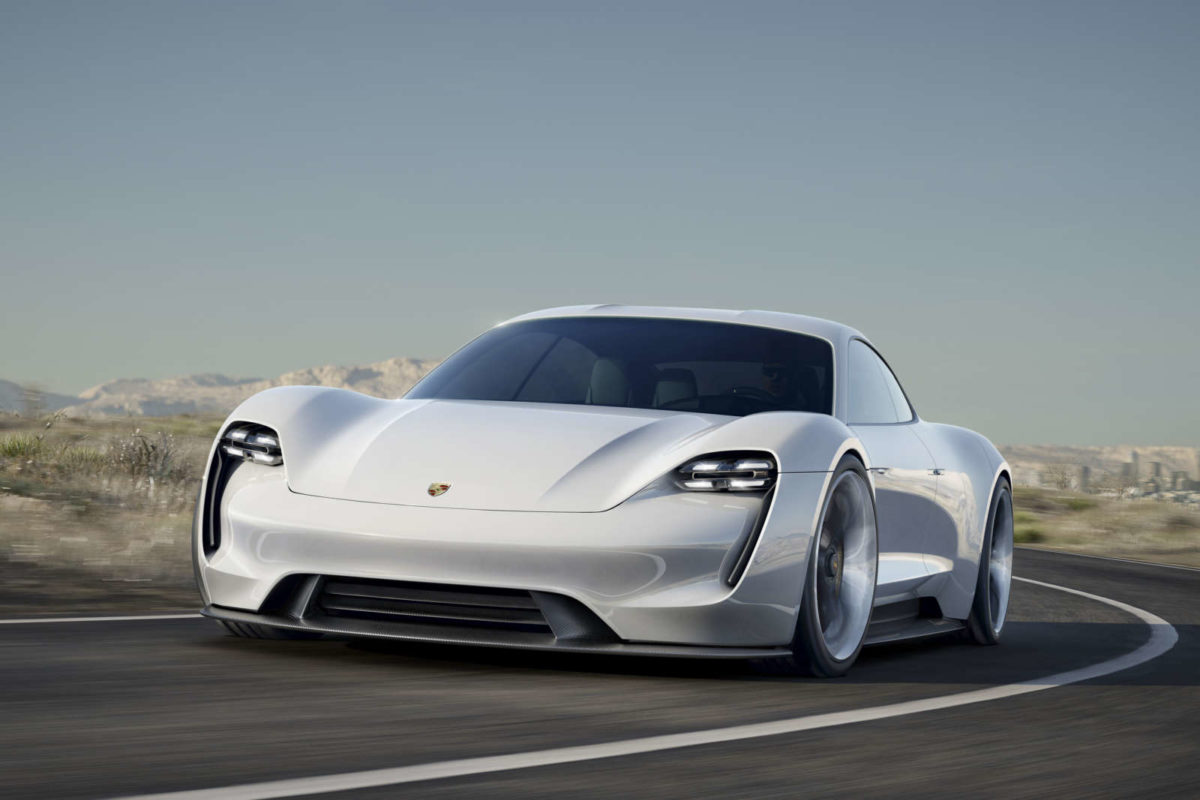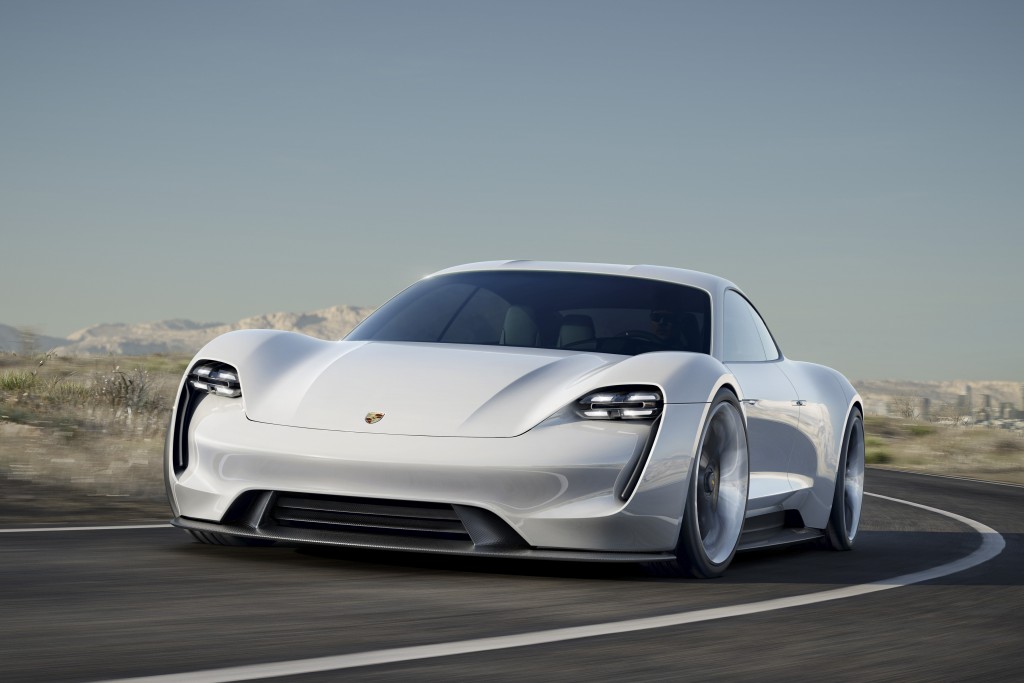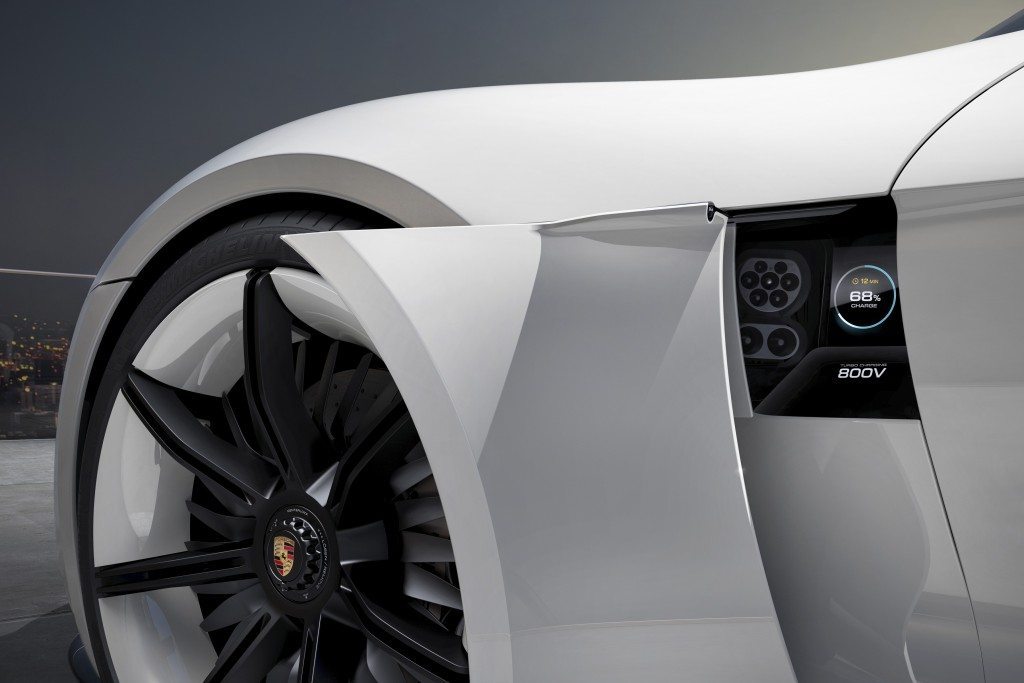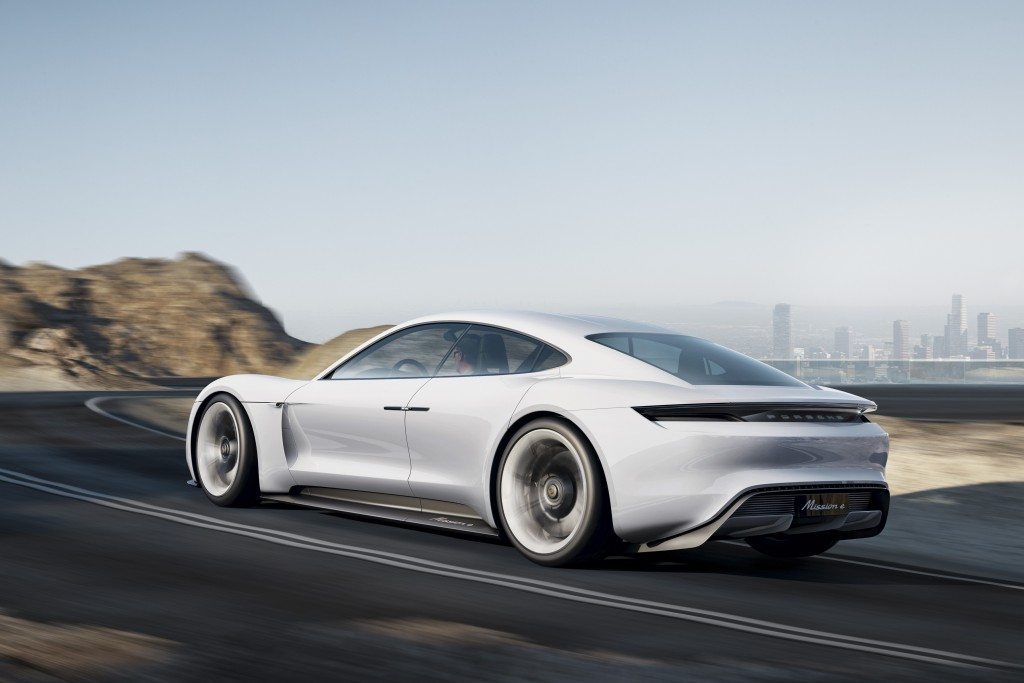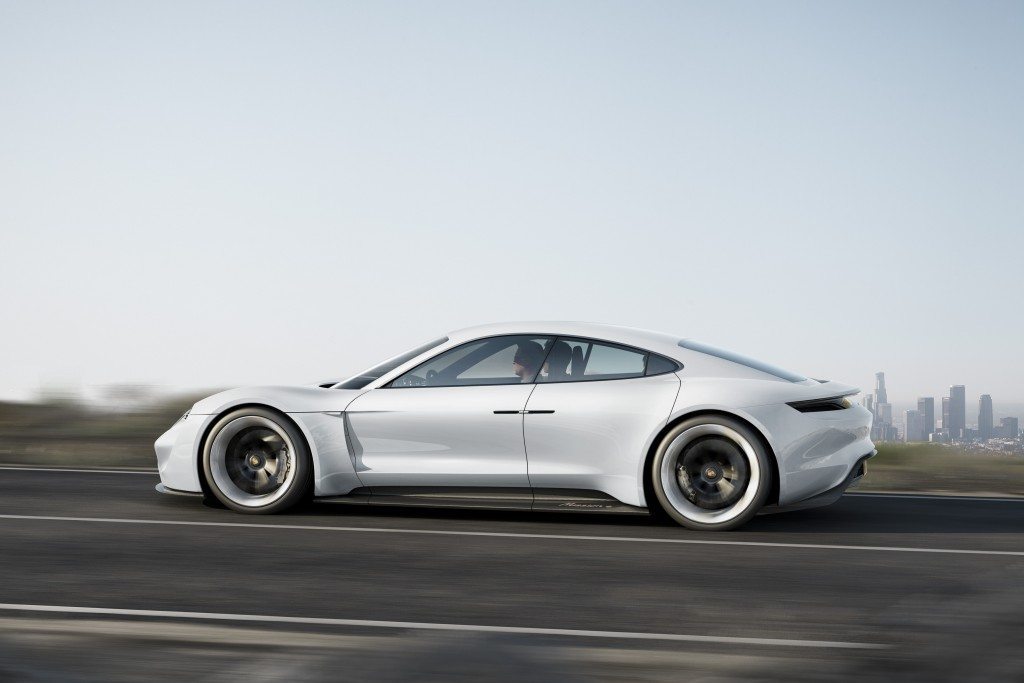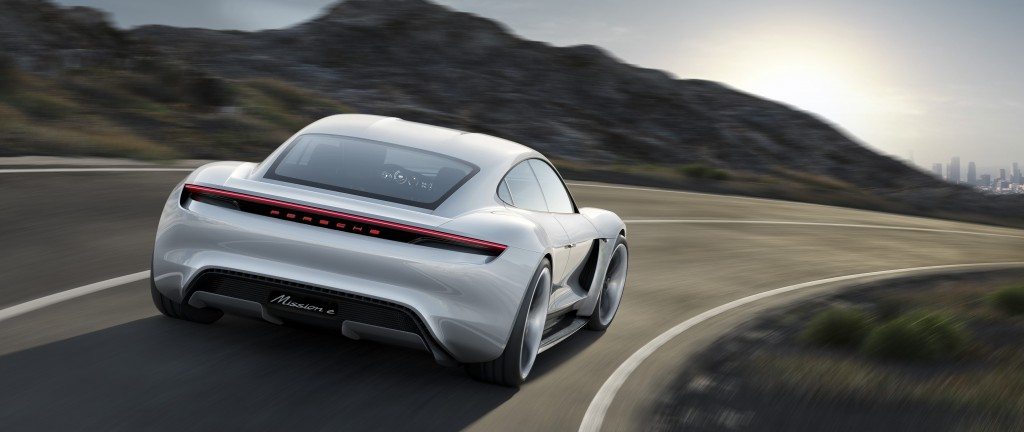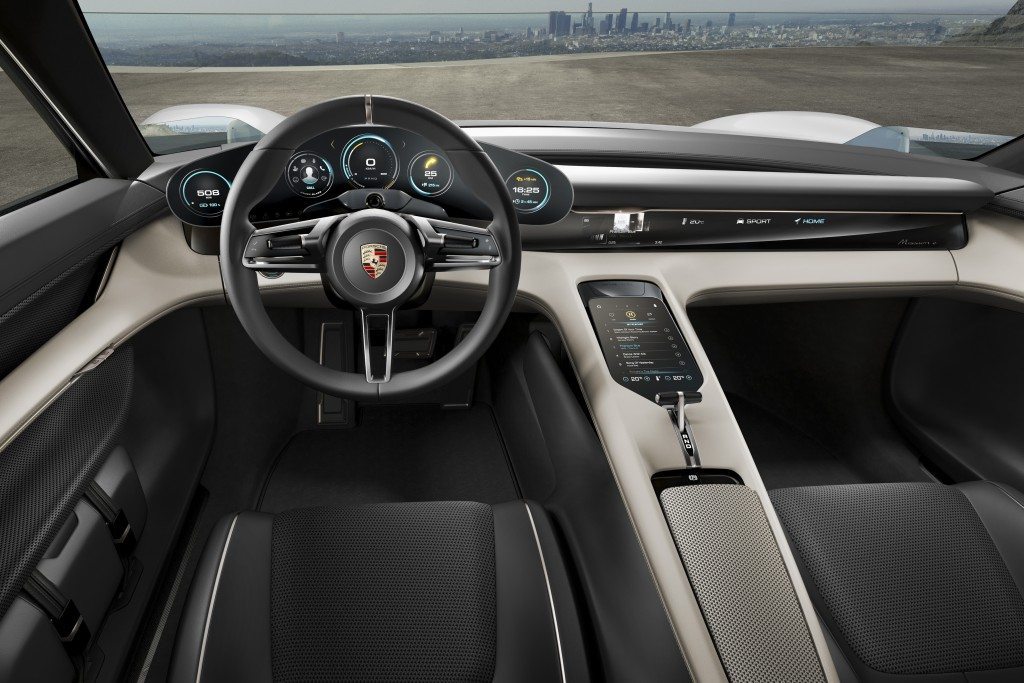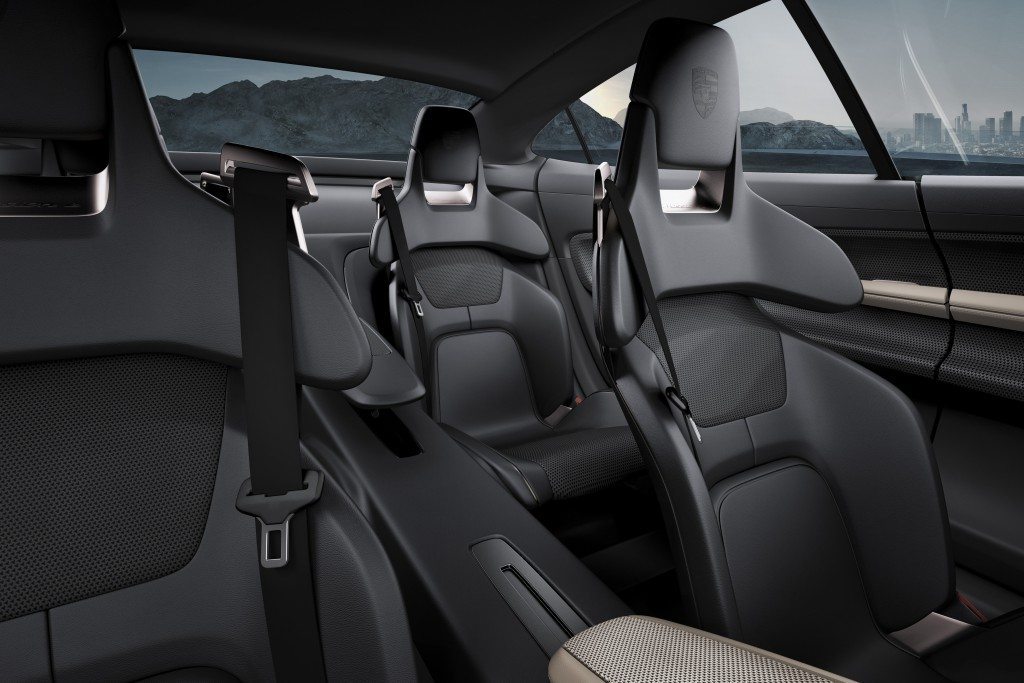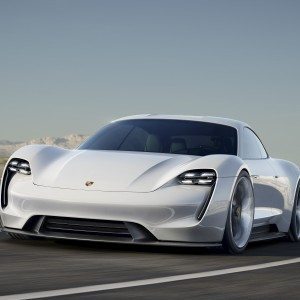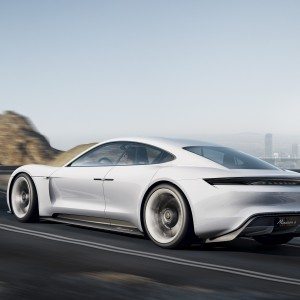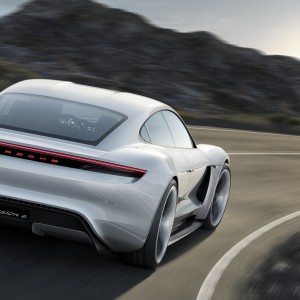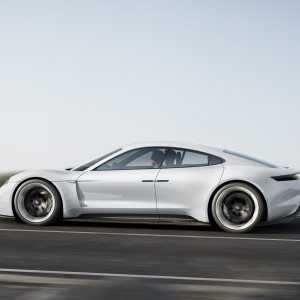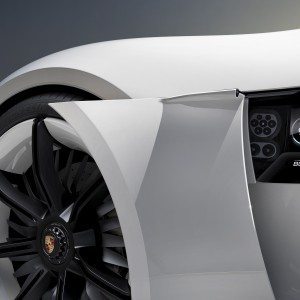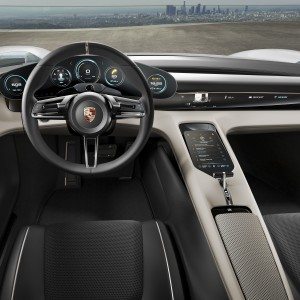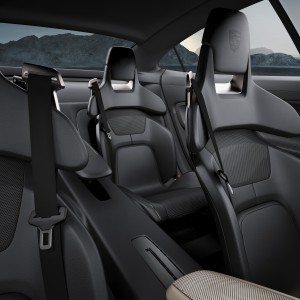Marking its début at the IAA in Frankfurt, Porsche presented its first all-electrically powered four-seat sports car in the brand’s history. The reason its here because a certain car called the Tesla Model S has been around for a while now, creating a dent in the automotive universe.
The Mission E is a sports car with four doors and four single seats, and boasts of 600 hp (440 kW) system power and over 500 km driving range. It also features all-wheel drive and all-wheel steering, and a zero to 100 km/h acceleration in under 3.5 seconds and a charging time of around 15 minutes to reach an 80 per cent charge of electrical energy.
Drive system & range:
The drive system of the Mission E is all new, and incorporates two permanently-excited synchronous motors (PSM) – similar to those used in the 919 hybrid endurance race car, which are responsible for acceleration and recover braking energy. Together the two motors produce over 600 hp, propelling the Mission E to a speed of 100 km/h in less than 3.5 seconds and to 200 km/h in under twelve seconds.
The Mission E’s all-wheel drive system works in conjunction with Porsche Torque Vectoring, which automatically distributes torque to the individual wheels, while all-wheel steering makes changing directions that much easier. Porsche says that the Mission E is potent enough to lap the North Loop of the Nürburgring in under eight minutes.
The Mission E can travel over 500 km on one battery charge, and it can be charged with enough energy for around 400 km more driving range in less than 15 minutes, a record time for electric vehicles. This is possible due to the use of 800-volt technology for the first time, as compared to today’s electric vehicles that operate at 400 volts. Doubling the voltage results in shorter charging times and lower weight, because lighter, smaller gage copper cables are sufficient for energy transport.
Driving dynamics:
Being a Porsche, the Mission E features optimal weight distribution and a low centre of gravity. The battery mounted in the car’s underbody, which is based on the latest lithium-ion technology, runs the whole length between the front and rear axles. The body as a whole is made up of a functional mix of aluminium, steel and carbon fibre reinforced polymer. The wheels are made of carbon: the Mission E has wide tyres mounted on 21-inch wheels in front and 22-inch wheels at the rear.
Design:
The Mission E is unmistakably a Porsche. The overall demeanour combines the athleticism of Zuffenhausen’s finest sports cars, along with a stretched, four-door physique, all appointed beautifully within a low height of just 130 cm. The Panamera feels like a hearse in comparison. Integrated aerodynamics are defined air inlets and outlets – on the front, sides and at the rear – typify the body’s full flow-through design that allow it skim the air around it with grace and efficiency. Integrated air guides improve air flow around the wheels, for instance, and air outlets on the sides reduce overpressure in the wheel wells, thereby reducing lift.
The front fascia relates the concept car to the 918 Spyder and Porsche race cars, especially the new type of matrix LED headlights, which are an evolution of the brand’s typical four-point light design. The four LED units are grouped around a flat sensor for assistance systems whose border serves as an indicator light. The line of the side windows is also similar to that of the 911, however, with one important difference – two counter-opening doors, which hide no B-pillar between themselves. The door mirrors have been sacrificed for better aerodynamics, and replaced by inconspicuous video cameras in the front fenders.
The rear design is typically Porsche, and imbibes a raked rear windscreen, which draws inward at the rear, creating space for the sculpted shape of the rear haunches. A three-dimensional “PORSCHE” badge illuminated from inside hovers beneath an arch of light that extends across the entire width in a black glass element.
Interior:
The clean and structured interior design of the Mission E does away with a transmission tunnel, which opens up space and gives a lighter and more airy atmosphere to the entire interior. The four occupants get individual race bucket seats to themselves. The driver’s cockpit is honed to offer lesser distractions while driving, and features a free-standing, curved display incorporating OLED technology.
The instrument cluster shows five round instruments the display, which are re-organizable. Furthermore, the whole display follows the seat position and body attitude of the driver to make sure all relevant information such as vehicle speed is always within the driver’s line of sight, and reduce parallax effect.
The Mission E can even portray driving fun: a camera mounted in the rear-view mirror recog nizes the driver’s good mood and shows it as an emoticon in the round instrument. The fun factor can be saved together with individual information such as the route or speed, and it can be shared with friends via a social media link.
Media, navigation, climate control, contacts and vehicle settings can be accessed touch-free using gesture control technology. The concept vehicle can also be configured externally from a tablet via Porsche Car Connect, changing the character of the vehicle by updating additional functions for the chassis, engine or infotainment system.
The virtual exterior mirrors employ lower corners of the windscreen show the images of the outside cameras that are mounted in the front wings. The benefits: the driver gets a better view of images and the surroundings, and safety information can also be actively displayed there.

